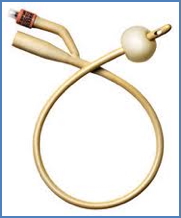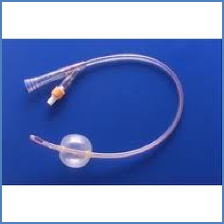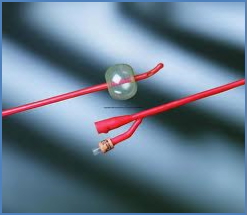Table of Contents
Overview – Catheterization
Urinary catheterization is a common and essential clinical procedure used to drain the bladder, collect urine samples, or monitor urinary output. It can be performed in both male and female patients and requires careful technique to prevent complications such as infection or trauma. Understanding the indications, anatomical considerations, catheter types, and procedural steps is critical for all medical students and junior doctors.
Definition
Urinary catheterization is the insertion of a flexible tube into the bladder via the urethra (or directly through the abdominal wall) to allow for urine drainage or monitoring.
Indications
- Urinary retention
- Collection of sterile urine sample
- Post-operative fluid monitoring (e.g. surgical or ICU patients)
- Obstructive uropathy:
- Benign prostatic hyperplasia (BPH)
- Prostate cancer
- Bladder cancer, clots, or stones
- Neurogenic bladder due to spinal trauma or paralysis
- Urological procedures or trauma management
Periurethral Structures That May Obstruct Catheterization
- Females:
- Labia minora and majora
- Males:
- Foreskin (ensure retraction and replacement)
- Prostate (can cause obstruction, especially in BPH)
- External urethral sphincters
Types of Catheters
- Foley Catheter (latex):
- Most common; features an inflatable balloon
- Cost-effective
- Silastic Catheter (silicone):
- Suitable for long-term use
- Lower risk of urethral irritation
- Robinson Catheter:
- No balloon; used for short-term or in-and-out catheterization
- Coude Catheter:
- Angled tip to navigate around enlarged prostate
- Preferred in difficult male insertions




Catheterization Procedure
Preparation
- Gather necessary equipment
- Explain the procedure and obtain informed consent
- Position patient supine, legs apart
- Prepare sterile field, apply gloves
- Cleanse periurethral area thoroughly
Insertion
- Check balloon for patency
- Lubricate distal 2–5 cm of the catheter
- Gently insert into urethra until 1–2 inches beyond urine flow
- Inflate balloon with 10 mL sterile water
- Pull catheter back until balloon rests at bladder neck
- Connect to drainage bag (keep bag below bladder level to ensure gravity drainage)
Complications
- Urethral trauma or discomfort
- Urinary tract infection (UTI)
- Bacteriuria
- Renal inflammation
- Ascending infection → pyelonephritis
Suprapubic Catheterization
- Indicated when transurethral catheterization is not possible (e.g., urethral injury, strictures)
- Involves percutaneous insertion of a catheter into the bladder via a suprapubic approach
- Commonly performed with imaging guidance or under surgical conditions
Summary – Catheterization
Catheterization is a fundamental skill used to manage urinary retention, monitor output, or collect samples. Proper technique reduces complications such as infection and trauma. Various catheter types are chosen based on clinical context and patient anatomy. Suprapubic routes are an alternative when urethral catheterization fails. For a broader context, see our Renal Overview page.